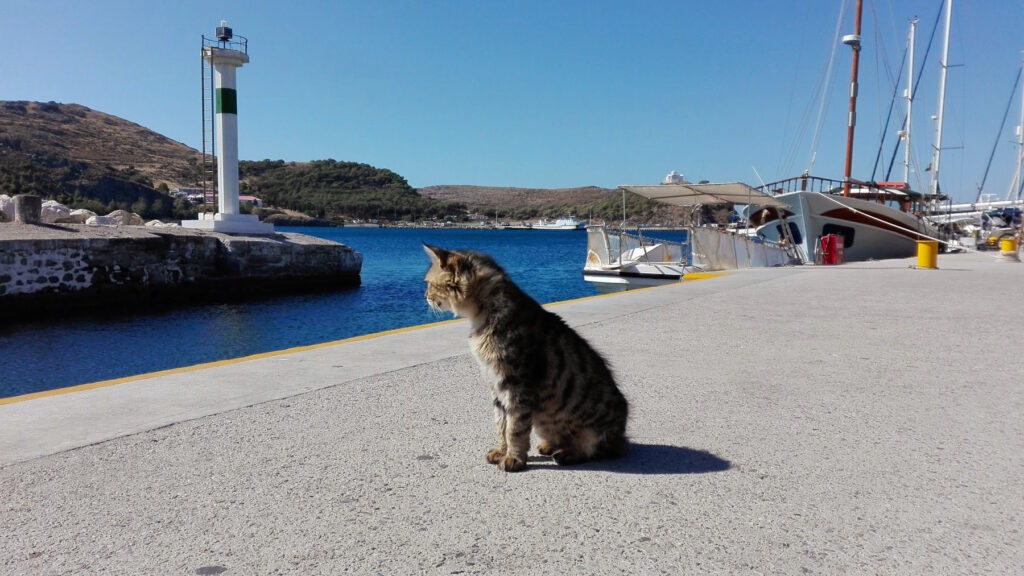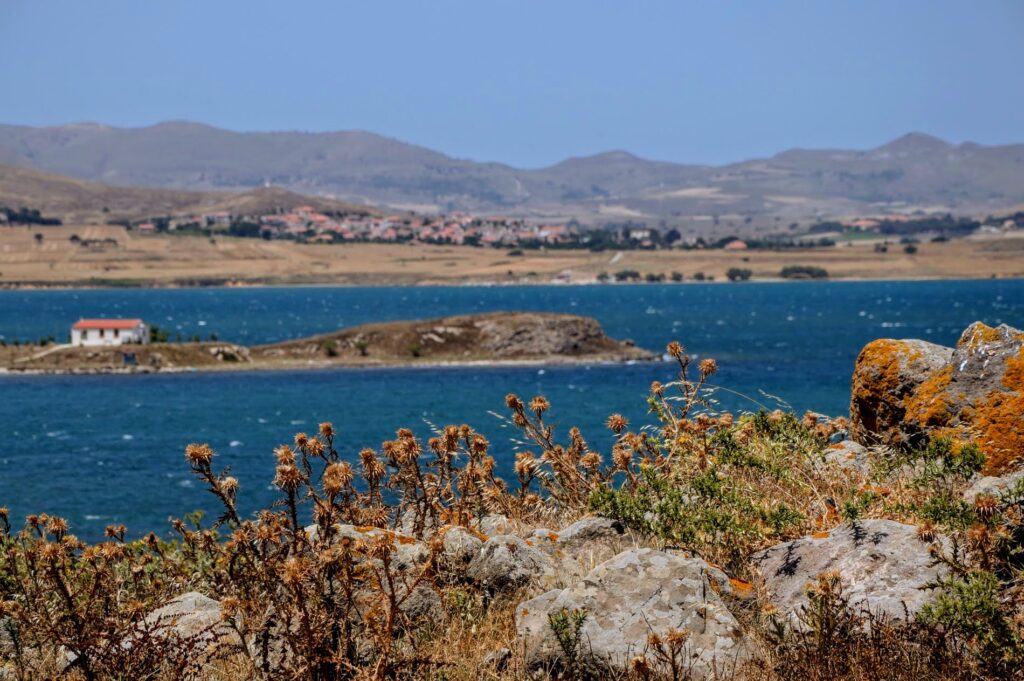June 19, 2023
Two Weeks Visiting Lemnos (or, Taking a Shot at a Travelogue)
If you are reading these lines around the time this post went live, I’m enjoying the Greek summer sun having iced coffee on the beach. I’m visiting Lemnos, a Greek island in the north Aegean Sea, and I had a funny idea: How about if I wrote a travelogue – a form I’ve never written?
I’ll confess it right away: The reason I’ve never written a travelogue (as a blog post, let alone anything longer) is because I’m not interested in them. I don’t care about travelogues as a reader, either. But hey, it’s important to get out of your comfort zone every now and then, so I’ll give it a shot.
What’s in it for you?
Plenty of photos from a genuinely beautiful place, as well as intriguing details you almost certainly don’t know.

Visiting Lemnos: Basic Facts Random Tidbits
No point offering any clinical, factual information here, like how big Lemnos is, how many people live there, or whatever. Check Wikipedia if you’re interested.
Rather, I think describing experiencing, the “how it feels” part, will be far more interesting.
First of all, another confession: Lemnos is the place my mother (and 3/4 of my grandparents) were born, and the place I spent every single one of my childhood summers. I’m a little biased when it comes to it. But screw it, bias helps us create meaning, as I explain at the end of this post.
And so, what would be the first experience one may have visiting Lemnos? Assuming they’re coming by plane, early in a spring morning or late in a summer evening, the first experience you’ll have is olfactory: You will smell Lemnos before you even step on the tarmac.
Scent of Herbs in the Climate Change Era
As you’re waiting for the passengers in front of you to start moving, you will realize the plane door has been opened, thanks to the indescribable freshness of moist wild flowers and herbs, depending on the season, that rush into the cabin.
When I was very little, before climate change began to get out of hand, you needed a long-sleeved shirt or cardigan for the early morning and late evening, even during the summer. Morning dew was ever-present, and with it came a bloomillion scents. Nowadays, the experience is a little bit diluted during the summer, but still present.

Visiting Lemnos Like a Local
I don’t even know what this is supposed to mean… I guess, I’m trying to say that I exist in a peculiar relationship with the place. Whenever I go, I’m both a tourist and a local. I’m a local because I know the place and many people there (and even more of them know my mother and grandparents). Yet I’m a tourist because I don’t live there — though I’m at least certainly not a mass tourist.
Still, visiting Lemnos like a local means I don’t have to find out details about where to stay, which beach to go to, what to eat.
And here’s a funny thing: Neither do you.
Lemnos is the kind of place that you can’t go wrong with anything, really. Unlike some hellish tourist traps like Santorini or Mykonos, Lemnos is the kind of place where food is (almost) everywhere both good and cheap, places are (almost) always not crowded, and (almost) any beach you’ll randomly pick is fine.
5 Things You Didn’t Know About Lemnos
A couple of these things are “not too hard” to find online, but the others are almost impossible – unless you know not just Greek but also the Lemnian dialect. Let’s start with the “not too hard to find” first.
- In the north of Lemnos, there is an area of extended sand dunes (see image above), that is unique in Greece and rare in Europe.
- There is an attractive myth (still, almost certainly a myth) about a female warrior, Maroula, who grabbed the sword of her fallen father and pushed back an Ottoman invasion (see image above).
- Unlike the traditional white/blue color schemes you see in the Cyclades (south Aegean Sea), houses in Lemnos come in all colors, some of them very eye-catching (see image below).
- Lupin beans used to be extremely popular for soups in older times. The local idiom is replete with expressions revolving around this legume, most of them… risqué. One of the more innocent ones refers to someone who is “only suitable for bitter lupin beans”, meaning, someone who is useless.
- The Lemnian dialect is immensely rich in precisely such risqué expressions. As an example, there are literally dozens of words and expressions for “masturbation”. If you want to impress a Greek-speaking friend, here’s one: τσουτσλοσφεντογόνιαζμα – I’m not even going to try to show you how to pronounce this; you’ll just have to send it as a text! Though this word doesn’t really make sense outside Lemnos, a Greek speaker should be able to still infer the meaning.
Visiting Lemnos – Again
As I said in the introduction, I’m visiting Lemnos while you’re reading these lines. It’s the third time in six summers, and let me tell you, I never get bored of it.
I’m not the kind of person who wants larger-than-life experiences. I just want good food and coffee by the water (see images above), and to relax on the beach. I absolutely hate crowds, especially if they are of “influencers” all rushing to snap-snap-snap a mindless photo of themselves (me-me-me) to post online.
Thankfully, Lemnos isn’t suitable for such things. It’s not Instagrammable, distances are somewhat long (compared to other islands), and being in the north Aegean means flying is the only practical way to get there. As a result, it mostly attracts Greeks and middle-aged or older Europeans.
There is also strong military presence on the island, making trespassing and mindless photo-taking something you need to avoid – unless you want to be slapped with espionage charges!
I don't show you ads, newsletter pop-ups, or buttons for disgusting social media; everything is offered for free. Wanna help support a human internet?
(If you'd like to see what exactly you're supporting, read my creative manifesto).






